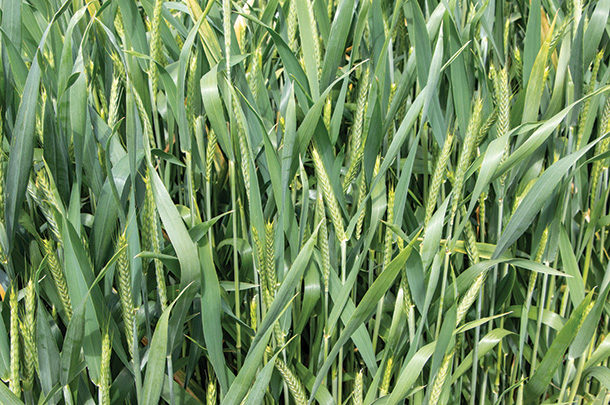When I was pursuing my undergraduate degree, microeconomics was my least favorite class – but if I recall one thing about the class, it’s incentives. Loosely defined, an incentive is anything that motivates a person to do something. For some, it could be an extra 30 minutes in a workout to satisfy a sweet craving or working overtime to buy that brand-new pair of shoes. Incentives can look different for everyone, but in this case the incentive on the table is soil health and forage production.
Cover crops are useful for sequestering nutrients, reducing erosion and improving soil structure, but they can also be used as a forage source. Using cover crops for forage can provide an economic incentive by offsetting costs and generating additional revenue. The harvest window for winter-hardy cereal silage is from early May until late June in the Midwest. Depending on an operation’s goals and future plans, the harvest date can be catered to ensure the land will be available to plant a summer cash crop.
Cereal rye is the most planted cover crop for corn and soybean operations, and it can be harvested for silage. Other common options include winter wheat and triticale. Since forage nutritive value and yield will change throughout the maturation process, the best species will vary for certain operations based on the quality of silage needed and how soon the land needs to be ready for the next crop to be planted. It is challenging to decide on what to plant and when to harvest, but if you can figure this out, there is potential for a big reward.
Answering this question and making producer decisions easier is the basis for ongoing research projects at the University of Nebraska. One study is focusing on effects of species and maturity and how this impacts yield and nutritive value of silage. The total digestible nutrients (TDN) decreased as maturity progressed, except at soft dough where there was an increase in energy content, likely due to grain formation (Figure 1).

Crude protein decreased as maturation occurred across all stages.
If the goal is a balance of quality and yield, then pollination offers increased yield without sacrificing much nutritive value. For maximized energy yield per acre, harvesting at soft dough is the better option (Figure 2).

In terms of overall yield per acre, rye and triticale performed similarly. Wheat fell behind substantially, especially at soft dough. From these results, it can be concluded that planting rye or triticale will result in the best nutrient yield per acre.
It is important to note, the key to good silage is creating the right environment for proper fermentation to minimize nutrient loss. Management is vital to fostering this environment. In an effort to understand the current production practices and its impacts on silage quality, samples of small grains at harvest, and again post-fermentation, were taken from 17 producers from across Nebraska.
So far, 15 silos have been opened and samples analyzed. One major thing to note about small-cereal silage is: Some wilting or field drying is typically needed to ensure silage is at an appropriate moisture. During fermentation, the primary acid that should be produced is lactic acid. Lactic acid is associated with the rapid drop in pH needed to “pickle” forage and prevent the growth of microbes that cause spoilage.
Silage that is put up too wet will lose nutrients and will often have butyric acid production. This will result in more nutrient loss during fermentation and make the silage less palatable. Around 50% of the samples collected from producers were in the target dry matter (DM) range of 30% to 35%. A large proportion (40%) were too wet despite the majority being wilted, suggesting the wilting time was too short.
For samples with less than 30% DM, there was a decrease in lactic acid and greater losses of TDN during fermentation, with some losing 10% units of TDN. Other challenges associated with small- cereal silage were packing issues. It was observed that hollow stems in the later stages of maturity caused packing challenges and decreased packing density.
With this in mind, care should be taken to ensure greater density is achieved by using smaller chop length and checking your pack tractor weight and packing time relative to incoming tons. Bagging may also be a good option.
Whether your incentive is improving your soil or ensuring you have a forage source to get cattle through the winter, it might be worth exploring how small-cereal cover crops can fit into your operation. If there’s one thing I learned in economics, it’s that incentives influence decisions. So as you make decisions about your operation in the upcoming year, consider what using small-grain cereals as a cover crop and silage source can do for you.










